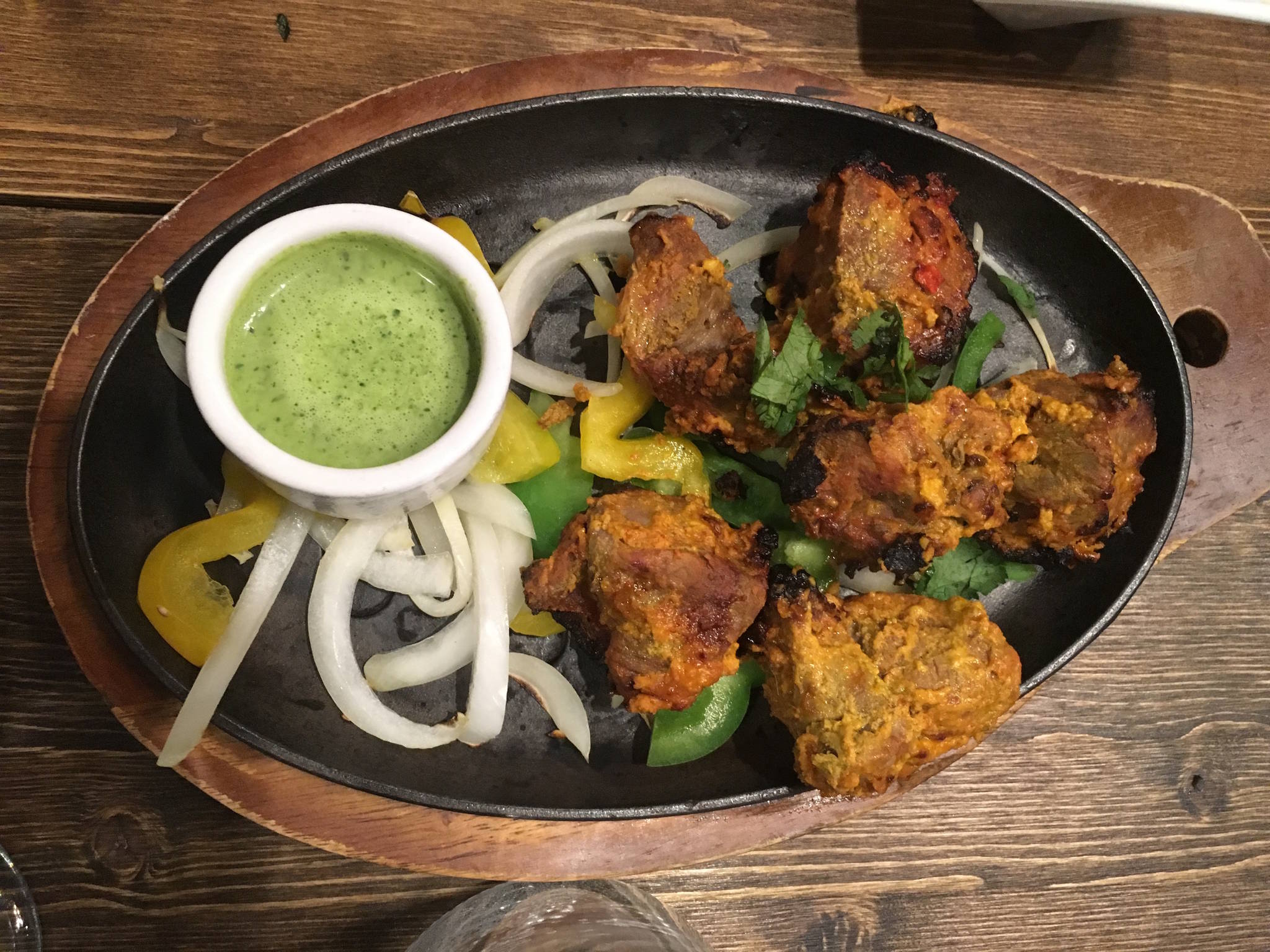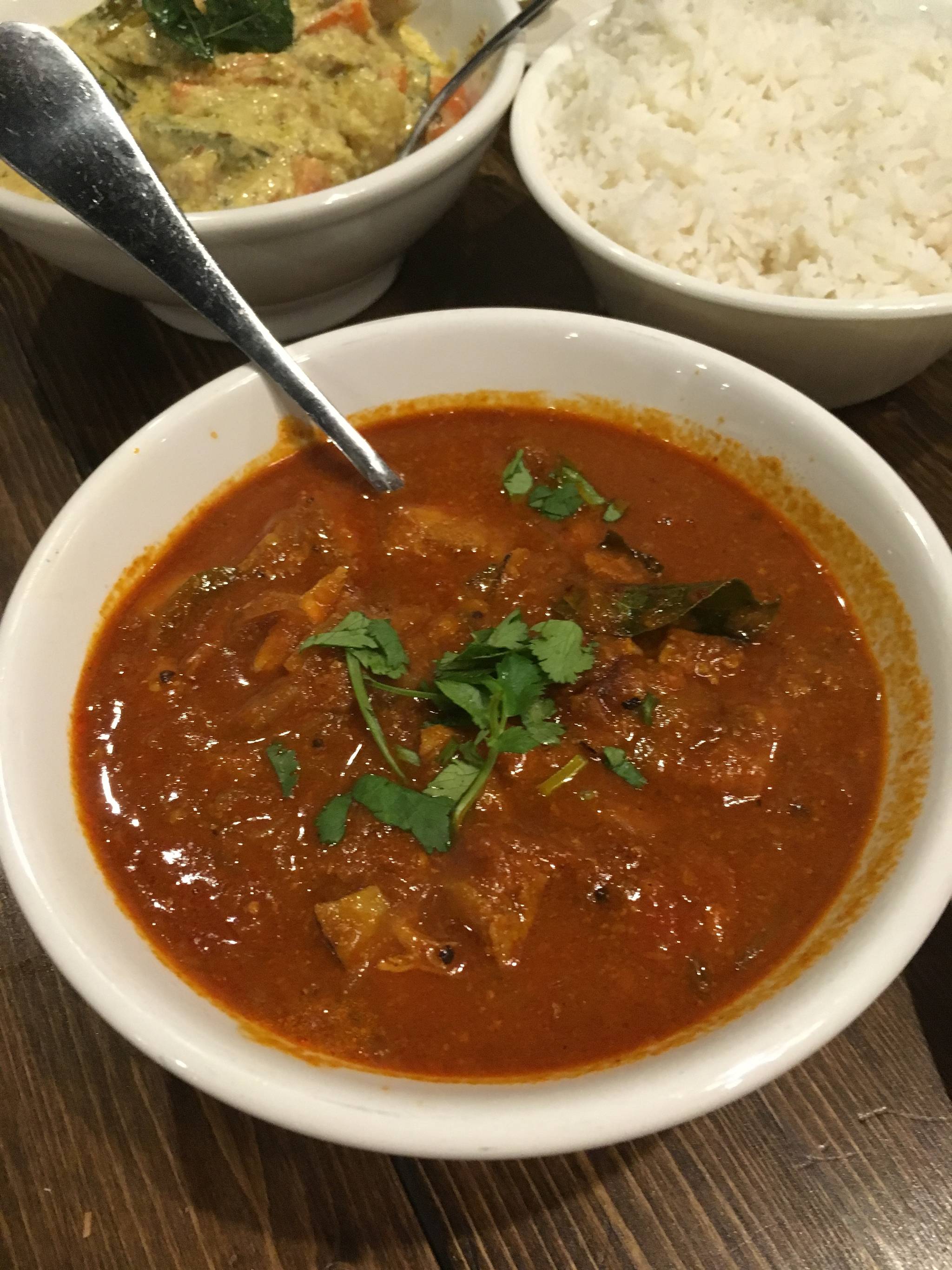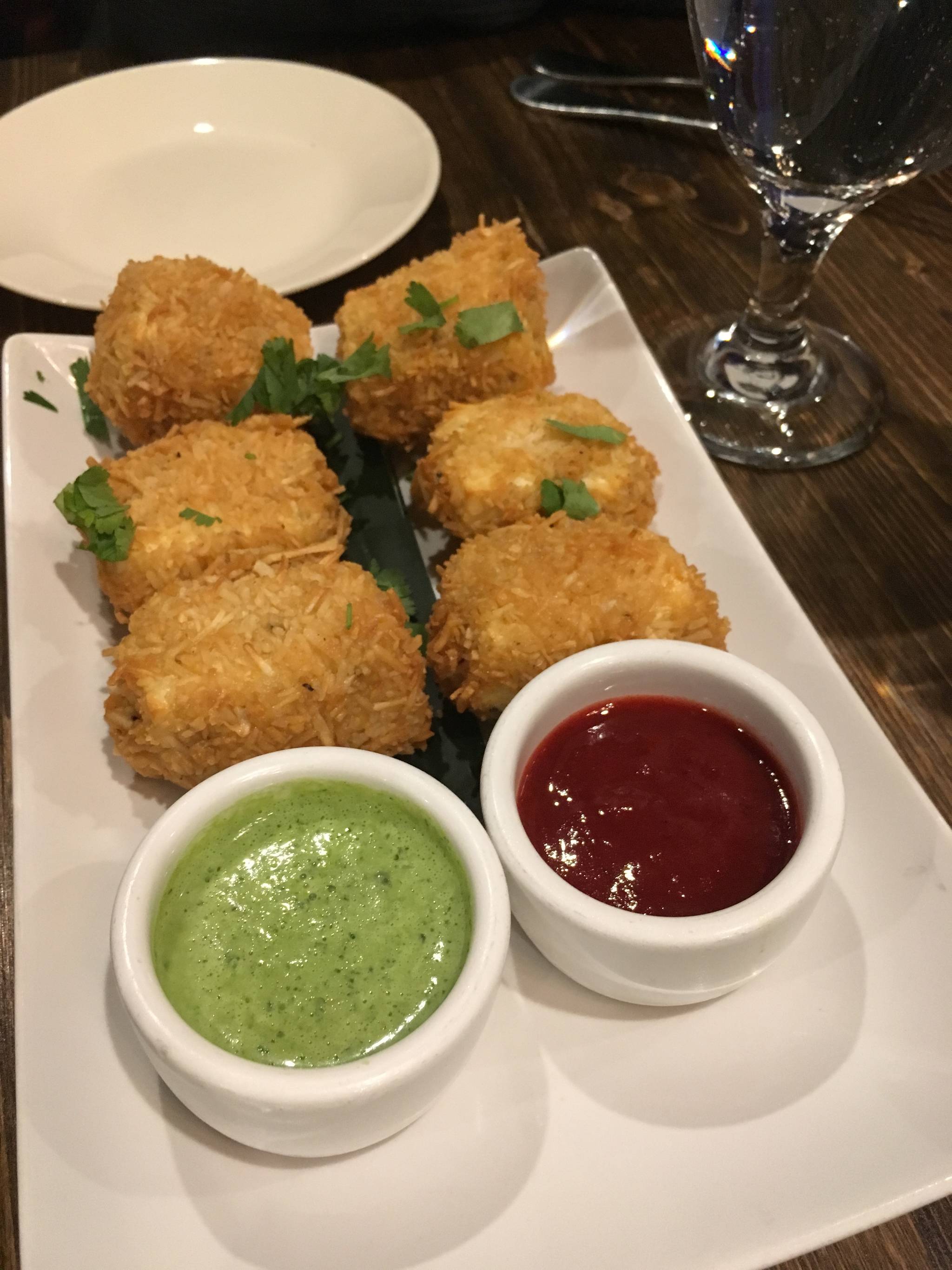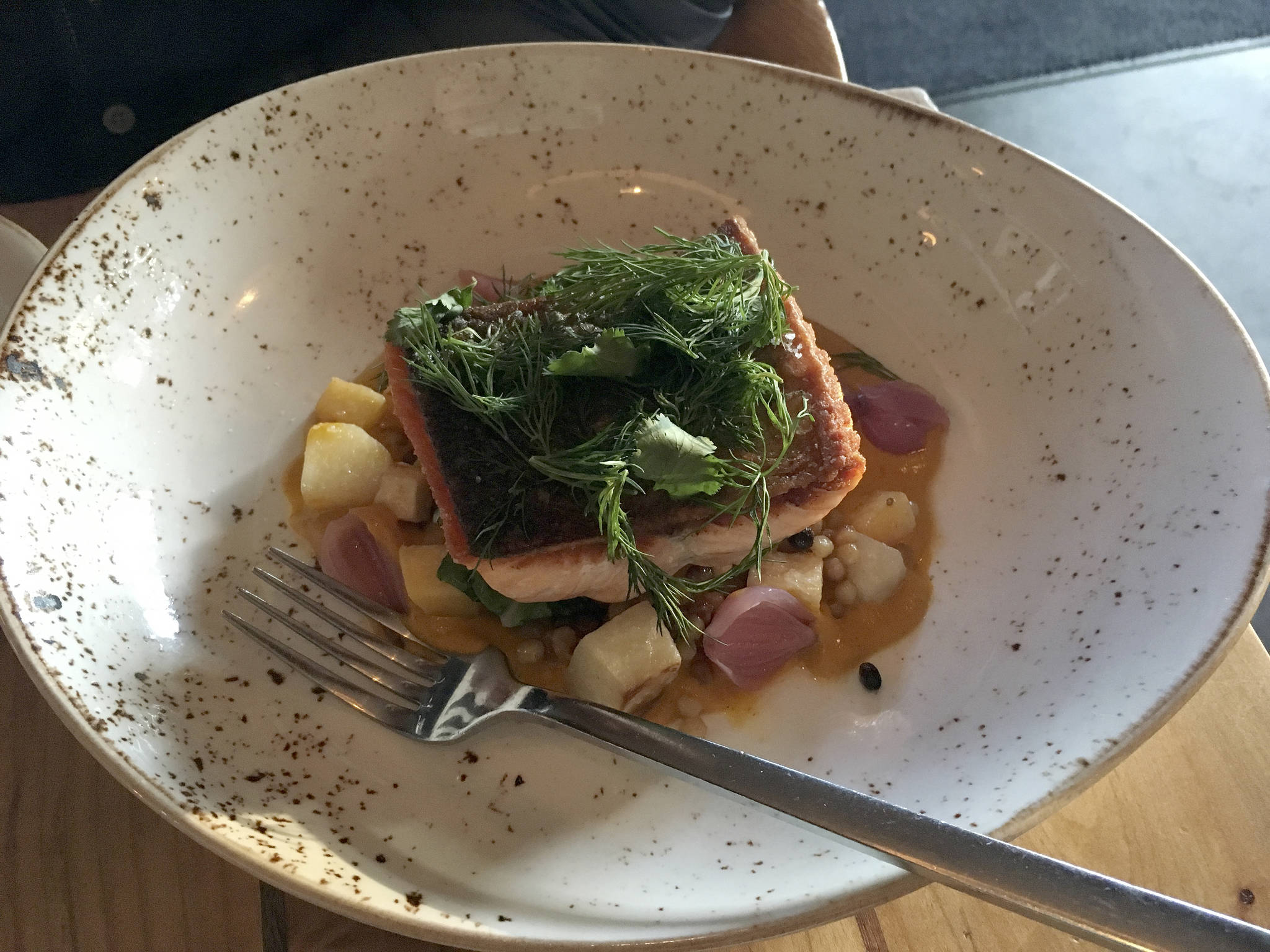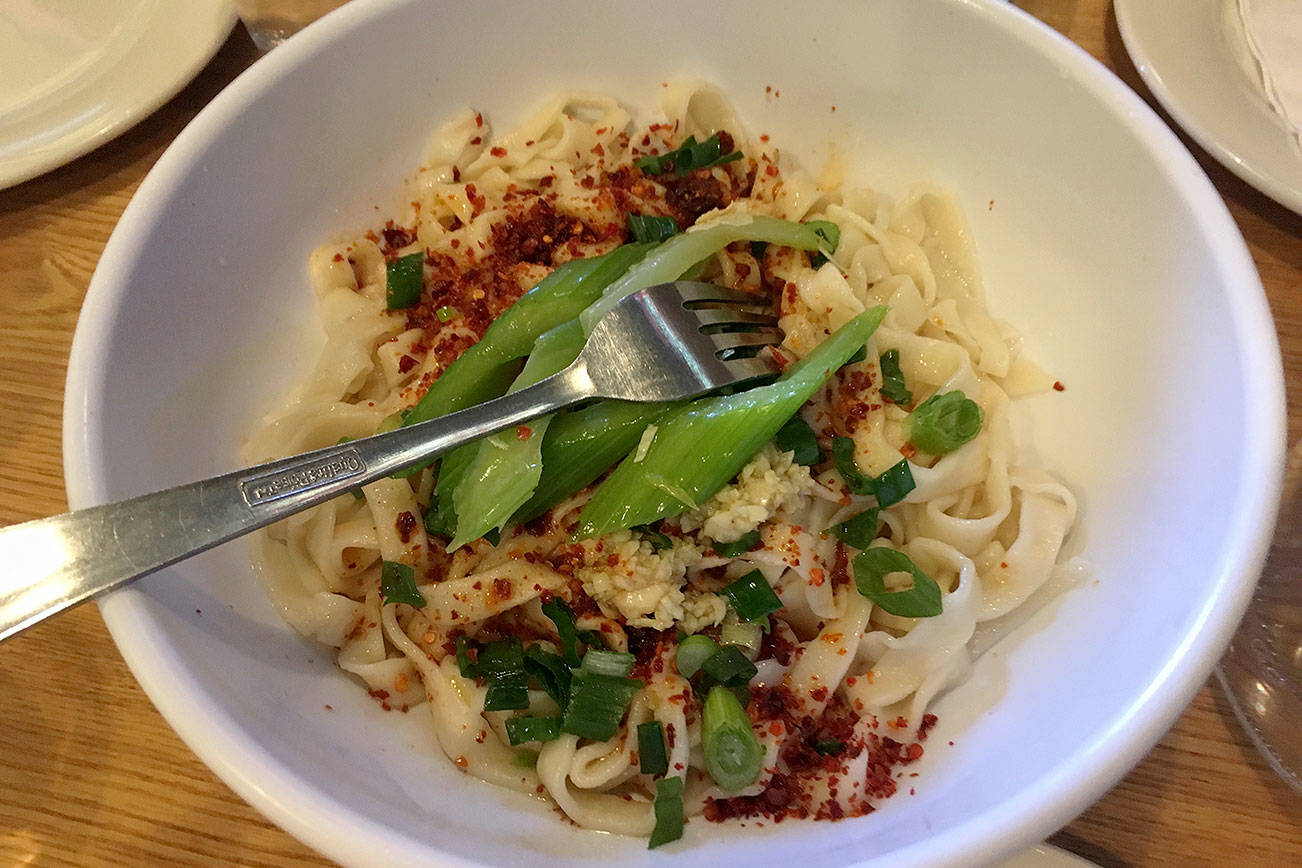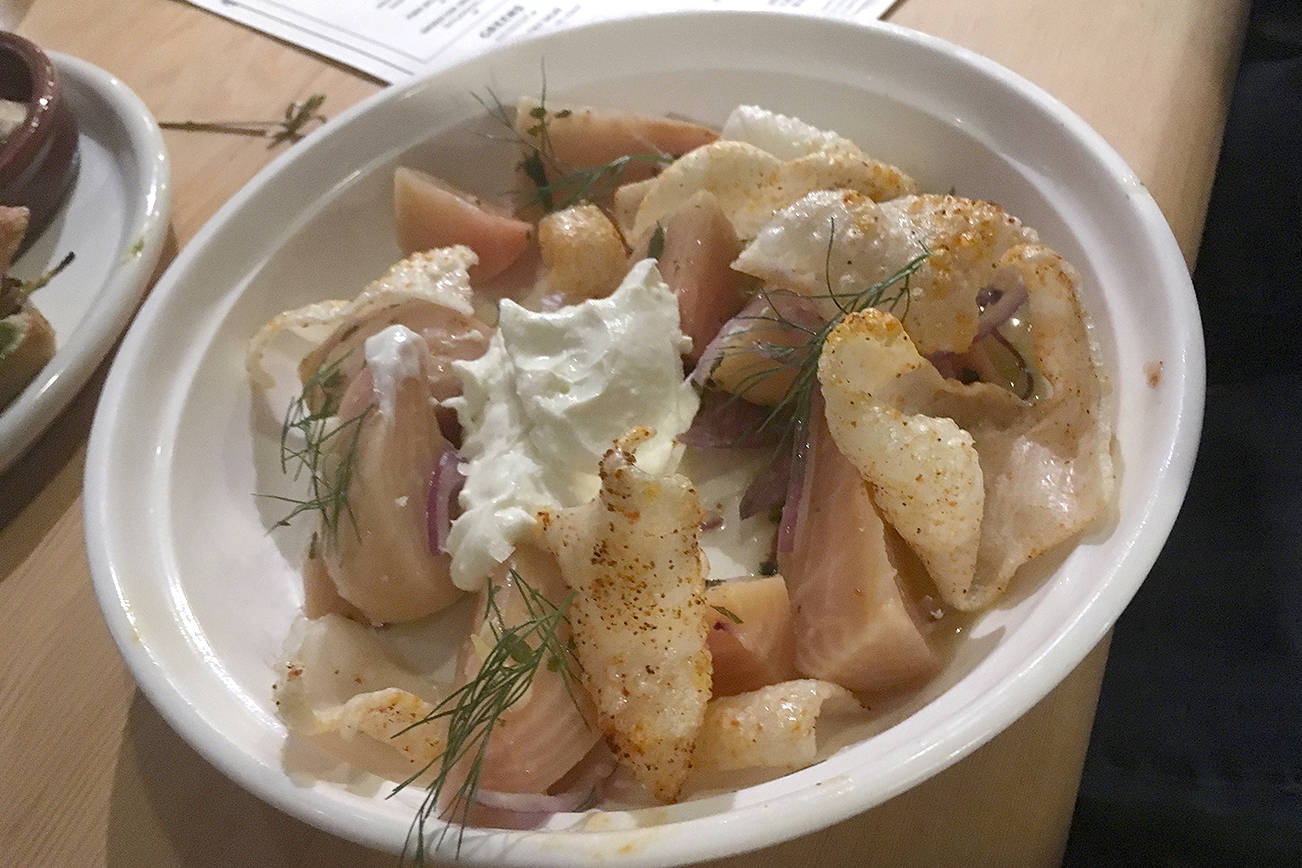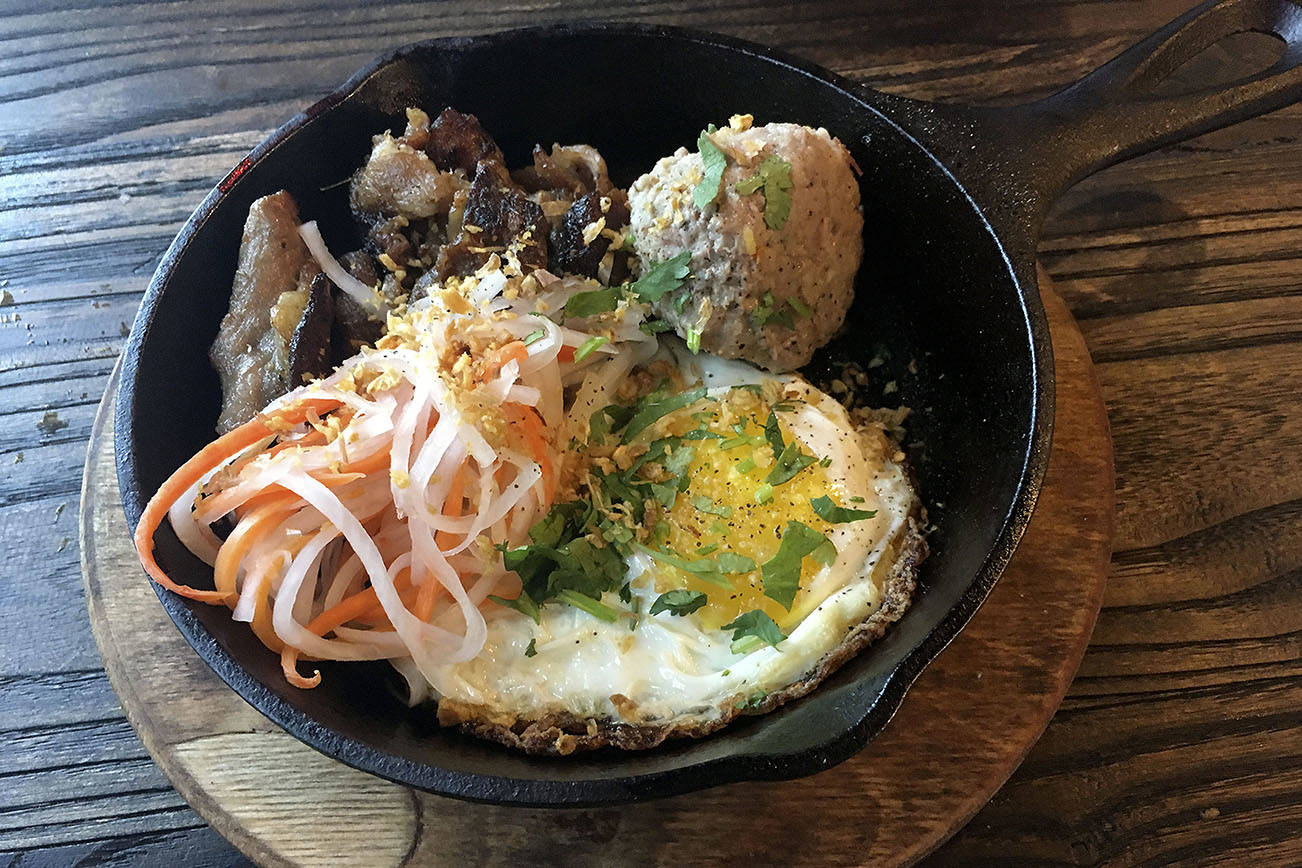One of the great foodie conundrums of Seattle is its lack of good Indian restaurants. With a robust East Indian community, you’d think we’d be lousy with them. Instead, our choices are relegated to mediocre buffets and menus offering the usual dishes, typically overwhelmed with cream-laden, one-note gravies (curries). It’s unfortunate considering how vibrant and interesting the cuisine can be, and it’s why I made the trek to Kirkland recently to try Kathakali, a new Indian eatery specializing in the cuisine of Kerala—the southwestern coastal tip of the country. I wasn’t the only one willing to journey for this regionally neglected cuisine; on a relentlessly rainy Saturday night, a small crowd began to gather outside the restaurant just before 5 p.m. By 7 p.m., every table was full and a throng of customers vied for space at the entrance.
There are a few things you should know about Kerala and its cuisine before heading east. It’s considered a major spice hub, where black pepper in particular grows abundantly. So do coconut, mango, tamarind, and jackfruit trees. Tipping down to the Indian Ocean, seafood is also plentiful. Kathakali makes sure that these ingredients—a panoply of spices and bright fruit flavors—accent many of the dishes on its menu. For those less inclined to experiment, they also serve standards such as lamb vindaloo and chicken tikka masala.
We began our feast for five with two small plates. Coco paneer, a novel way to treat the traditional mild-flavored Indian cheese, comes in inch-thick squares, lightly battered with corn flour and grated coconut. They look like some sort of fancy French dessert, and the paneer is taut and ever so lightly sweetened by the coconut. A spicy tomato chutney is a lovely accompaniment that doesn’t overwhelm the delicate dish. Kale onion cashew pakora (pakora basically is anything deep-fried) are similar in size to fried calamari and fun to grab and munch, though the flavors aren’t particularly distinctive. Two dipping sauces, a sweet tamarind and a mint chutney, add to their snack-like quality.
Of the 10 dosas available on the menu, we opted for the chakka thoran, in part because I’m somewhat obsessed with all things jackfruit, that dubiously famous hunk of a fruit. Beneath its pockmarked, spiky thick skin lies translucent, white, fetal-shaped flesh similar in consistency to a lychee, but holding a flavor all its own—sometimes described as a cross between a banana and a pair of old socks. I prefer to think of it as notes of unripe banana and pineapple meeting the earthiness of mushroom. Whatever the case, it comes minced so finely within the foot-long rice-and-lentil crepe that anyone intimidated by the fruit should feel completely comfortable trying it in this preparation. Mixed with grated coconut and Kerala spices (black pepper, cardamom, and cinnamon among them), its tang is just perceptible. We tore off pieces of the paper-thin dosa with its crackly edges and dipped them in the chutneys and the side of staggeringly good spiced lentil soup.
Moving on to entrée-sized dishes, the vegetarian palakkad avial beguiled with its promise of green banana, carrot, white pumpkin, beans, yam, moringa, raw mango, and jackfruit seeds enveloped in a light yogurt sauce flavored with cumin, turmeric, green chili, ground coconut, and coconut oil. While I appreciated the lightness of the yogurt sauce and its tease of coconut, it was challenging to distinguish all of the vegetables. Carrots and white pumpkin seemed to predominate, though I managed to bite into a pungent blast of raw mango. Overall, I wished for more variety from it.
The same was not true of the meen pollichathu, a whole marinated sea bass cooked and served in a banana leaf. The flaky meat, which broke off in handsome chunks, is coated in a spicy tomato-based sauce exploding with onion and ginger, garlic and green chili, as well as “seafood spices,” which tasted to me like a sort of shrimp paste. A close inspection of the sauce yielded countless bits of onion and garlic, along with stray sprinklings of spices and curry leaves. This is a sauce built painstakingly, and the endeavor is a fruitful one. Kerala chicken curry, too, showcases layers of flavors, with tender pieces of boneless chicken soaking up a fiery sauce based on red chili paste and juxtaposed with sweet tamarind and cherry tomatoes, turmeric and curry leaves. Despite the intense heat, the dish’s complexity manages to shine through—no small feat. (Note: This is a good dish for bread dipping. We ordered the multi-layered malabar parotta and green chili naan.)
But perhaps the winner of them all is the lamb boti, one of the restaurant’s five tandoor specials. Unlike unfortunately customary dried, overcooked tandoori chicken, these oversized cubes—nearly slabs—of lamb are gorgeously rubbed in a yogurt sauce that speaks decidedly of red chili, coriander, cumin, and turmeric, allowing the juicy morsels of meat to luxuriate on the palate. The side of mint chutney is tasty, but hardly necessary.
After the pageantry wound down, we were still temped by desserts, and, again, Kathakali showcases unusual ones beyond the predictable syrupy-sweet ras malai. Instead we were treated to ada pradhaman—essentially a sauce of milk, steamed rice bits, sugar, cardamom, ghee (clarified butter), toasted coconut, cashews, and raisins. It was indeed sweet, but the plump, soaked raisins and rice bits, tiny treasures, add great texture and the cardamom a welcome wash of fragrant spice. Chakka ela ada, far less sweet, contains pieces of cooked jackfruit inside rice steamed into a custard-like consistency, spiced with cardamom and sweetened by jaggery (unrefined sugar that comes from cane juice, and looks like pretty pieces of reddish fudge in its natural state). Had they come at the same time, I might have considered pouring the first over the second for a perfectly balanced dessert.
Just as Kathakali’s menu defies Seattle Indian restaurant clichés, so does the interior. While it pays homage to Indian culture with thoughtful, traditional accents like a gold statue of Ganesh, wood carvings, and a painting of a costumed elephant, it’s also thoroughly modern. Elegant floor-to-ceiling beams are highlighted with dark wood squares and stand in pleasing contrast to creamy white walls, while chandeliers made of lantern-like fixtures lend a soft hue to the wood-grained tables and royal-red window treatments. The overall atmosphere, despite the buzz of the crowd and trays pouring forth from the kitchen, is relaxed and convivial—a perfect setting to expand your possibly limited perception of Indian food.
